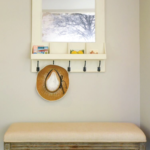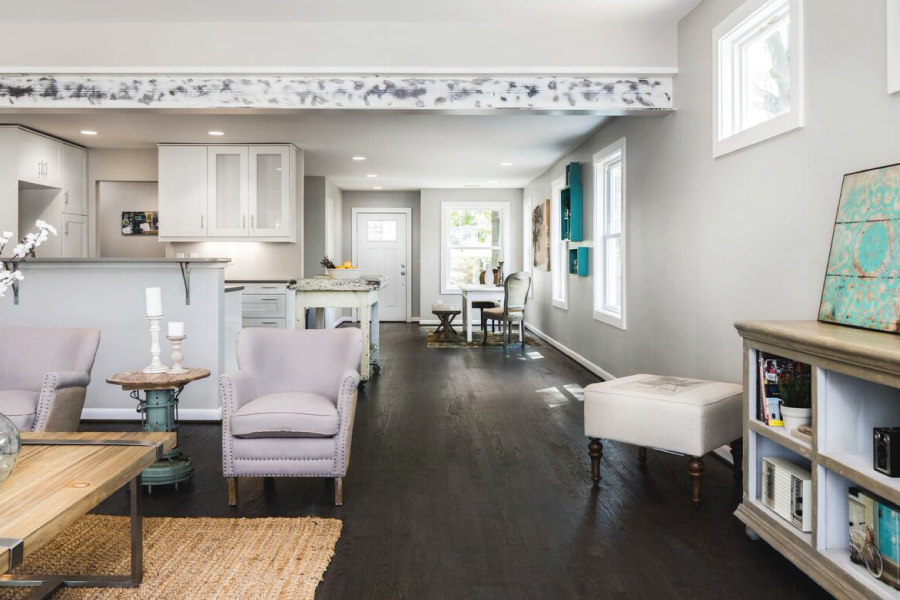So you want to work with a stager… now what? For most people, working with a stager isn’t a regular occurrence and like any ‘first time’, you might be a little apprehensive about what to expect.
It’s important everyone is on the same page in order to avoid potentially awkward conversations. Kind of like the uncomfortable conversation I had to have recently with a designer of a client. The designer was helping my client flip the home… selecting finishes and paint colors. In this case, she was my point person on the issue of the staging. The designer requested to see my warehouse ahead of time. No problem. We talked about styling and color for the stage design. All good. In turn, she showed me homes she had put furnishings in for this same owner previously. I welcome clients who have ideas, questions, and want to have some level of involvement. Ultimately, that helps me deliver exactly what they want! The rub happened when after placing my staging the designer moved everything around, edited out things she didn’t want in each room and demanded that I pick up the leftover items.
The whole thing made me realize that the staging system of operations is not a foregone conclusion. I take staging protocol for granted. If someone hasn’t used a stager before they would have no idea what the rules are.
Let me give you a little guidance.
 Choose a stager who’s styling, not style, you like and trust. There’s a big difference. When people ask me my”style” in regards to my staging, I explain that I offer many different styles. My inventory includes contemporary to classic – Mid century to minimalism – shabby chic to SOHO. Most stagers offer an array of style options. The distinction between stagers is often in the ‘styling.’ This idea is more abstract, but a great example would be how I utilize spaces. I use a drafting table v. desks in my office spaces. I like to send a message of creativity instead of work. The styling sets the vibe. If you are aren’t sure if it’s a right fit, ask to see pictures of previous stages they have completed. If you have a positive reaction to a stagers work, they are the right stager for you. You know it when you see it. Once you hire them — trust they will bring that same design aesthetic to your stage.
Choose a stager who’s styling, not style, you like and trust. There’s a big difference. When people ask me my”style” in regards to my staging, I explain that I offer many different styles. My inventory includes contemporary to classic – Mid century to minimalism – shabby chic to SOHO. Most stagers offer an array of style options. The distinction between stagers is often in the ‘styling.’ This idea is more abstract, but a great example would be how I utilize spaces. I use a drafting table v. desks in my office spaces. I like to send a message of creativity instead of work. The styling sets the vibe. If you are aren’t sure if it’s a right fit, ask to see pictures of previous stages they have completed. If you have a positive reaction to a stagers work, they are the right stager for you. You know it when you see it. Once you hire them — trust they will bring that same design aesthetic to your stage.
 There is a method to the madness. Watching staging being moved in, unpacked and shifted around is like watching sausage being made. It’s not attractive. However, after it’s put together it’s delicious (the sausage and the staging). If you are the homeowner, give the stager time and space to change and create. Don’t worry when you see bins and boxes spilling out in the living room. This is sausage being made.
There is a method to the madness. Watching staging being moved in, unpacked and shifted around is like watching sausage being made. It’s not attractive. However, after it’s put together it’s delicious (the sausage and the staging). If you are the homeowner, give the stager time and space to change and create. Don’t worry when you see bins and boxes spilling out in the living room. This is sausage being made.
 Don’t move staging. It is perfectly fine to ask the stager about design choices and voice opinions. However moving, editing, or adding to the stage once in place is a no- no. Remember staging is about bringing a space to life and creating a beautiful and interesting story that pulls potential buyers in. Staging is not catered to the client’s personal taste. Talk to your stager if there is a particularly objectionable piece or set-up. Please don’t take it upon yourself to move it.
Don’t move staging. It is perfectly fine to ask the stager about design choices and voice opinions. However moving, editing, or adding to the stage once in place is a no- no. Remember staging is about bringing a space to life and creating a beautiful and interesting story that pulls potential buyers in. Staging is not catered to the client’s personal taste. Talk to your stager if there is a particularly objectionable piece or set-up. Please don’t take it upon yourself to move it.
As a stager I am hired to showcase the best use of a space, create a beautiful picturesque design, and evoke a positive response from viewers. I always want the client to be happy with the end result and trust the process. You’ll like it, I promise.



